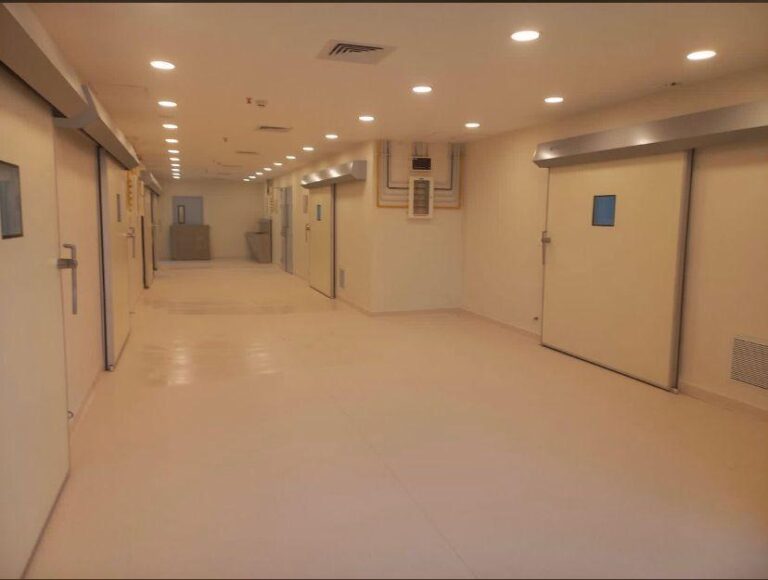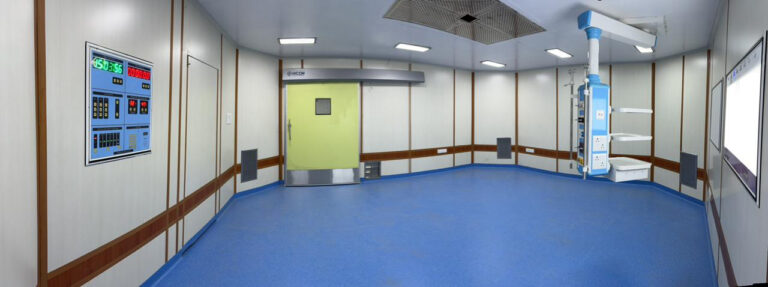In today’s rapidly advancing world of healthcare and technology, specialized infrastructure plays a critical role in ensuring safety and efficiency. One such vital component in many facilities is the anti-radiation door. While standard doors are ubiquitous and serve general purposes, anti-radiation doors are meticulously designed for environments where radiation protection is paramount. This blog delves into the key differences between these two types of doors and why the choice of an anti-radiation door is crucial in specific applications.
Understanding Anti-Radiation Doors
Anti-radiation doors are engineered to protect people and environments from harmful radiation exposure. Commonly used in hospitals, diagnostic centers, nuclear facilities, and laboratories, these doors are constructed with materials such as lead, which effectively block or attenuate radiation. They comply with strict safety standards to ensure that radiation does not leak into adjacent areas, safeguarding both patients and staff.
Standard Doors: General Purpose and Limitations
Standard doors, on the other hand, are designed for everyday use and are typically made of materials like wood, steel, or aluminum. While they provide privacy, sound insulation, and basic security, they lack the specialized shielding properties required to block radiation. Using a standard door in a radiation-sensitive environment can lead to severe health risks and compromise regulatory compliance.
Key Differences Between Anti-Radiation Doors and Standard Doors
- Material Composition
- Anti-Radiation Doors: Incorporate lead sheets, high-density materials, or composites designed to absorb radiation.
- Standard Doors: Made of wood, metal, or glass, which offer no radiation protection.
- Purpose and Application
- Anti-Radiation Doors: Specifically built for environments with X-ray machines, CT scanners, or radiation therapy equipment.
- Standard Doors: Suitable for homes, offices, and general-purpose areas where radiation is not a concern.
- Safety Standards
- Anti-Radiation Doors: Must meet stringent safety standards like National Council on Radiation Protection and Measurements (NCRP) guidelines.
- Standard Doors: Designed to meet general building codes without radiation shielding requirements.
- Cost and Investment
- Anti-Radiation Doors: Higher upfront cost due to specialized materials and engineering.
- Standard Doors: More affordable but unsuitable for radiation-prone areas.
Why the Difference Matters
- Health and Safety Radiation exposure can lead to severe health issues, including radiation sickness, cancer, and genetic mutations. An anti-radiation door minimizes these risks by preventing radiation leakage, ensuring that patients and healthcare workers are not exposed to harmful levels.
- Regulatory Compliance Industries that deal with radiation are bound by strict regulations. Failure to use appropriate shielding solutions, such as anti-radiation doors, can result in legal penalties, operational shutdowns, and reputational damage.
- Operational Efficiency Anti-radiation doors are designed for seamless operation, with features like automatic sliding mechanisms, ensuring ease of use in high-traffic areas like hospitals. This contrasts with standard doors, which may not be as durable or functional in such demanding environments.
- Long-Term Cost Effectiveness While the initial investment in anti-radiation doors is higher, they offer long-term benefits by reducing health risks, preventing costly legal issues, and ensuring compliance with safety standards. Standard doors, when improperly used in radiation zones, can lead to significant future expenses.
Choosing the Right Anti-Radiation Door
When selecting an anti-radiation door, consider factors such as:
- Thickness and Lead Equivalence: Ensure the door’s shielding capacity matches the radiation levels in your facility.
- Design and Functionality: Look for options like sliding or hinged doors that suit your space and workflow.
- Certification and Standards: Verify that the door meets local and international radiation protection standards.
Conclusion
The choice between anti-radiation doors and standard doors is not just a matter of preference but a critical decision with far-reaching implications. For facilities exposed to radiation, investing in a high-quality anti-radiation door is non-negotiable. It ensures the safety of individuals, maintains regulatory compliance, and supports the efficient functioning of specialized environments.
HIKOM International LLP specializes in providing top-tier anti-radiation doors tailored to your specific needs. With a commitment to quality and safety, HIKOM’s solutions are designed to protect what matters most. Contact us today to learn more about our range of anti-radiation doors and how they can enhance your facility.


